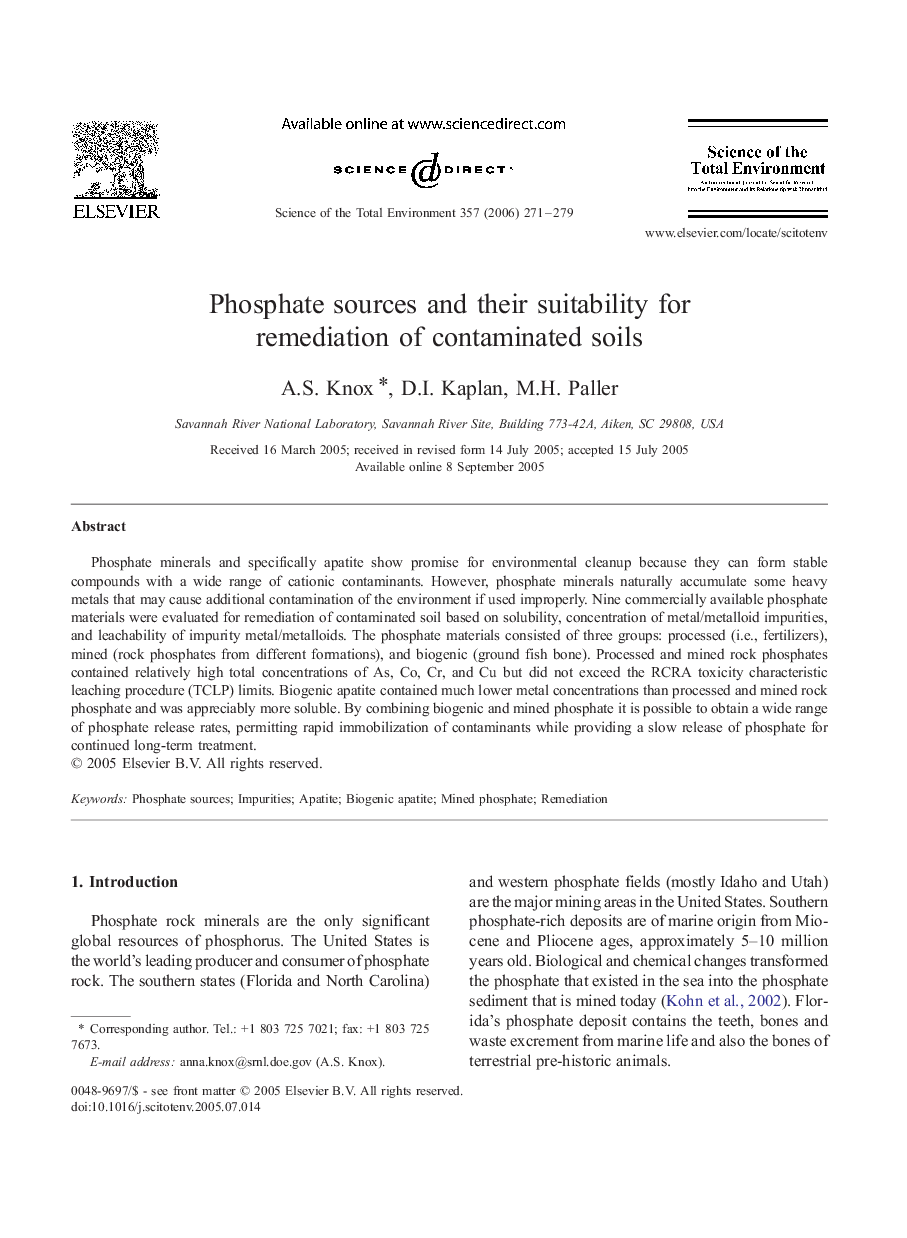| Article ID | Journal | Published Year | Pages | File Type |
|---|---|---|---|---|
| 4434363 | Science of The Total Environment | 2006 | 9 Pages |
Phosphate minerals and specifically apatite show promise for environmental cleanup because they can form stable compounds with a wide range of cationic contaminants. However, phosphate minerals naturally accumulate some heavy metals that may cause additional contamination of the environment if used improperly. Nine commercially available phosphate materials were evaluated for remediation of contaminated soil based on solubility, concentration of metal/metalloid impurities, and leachability of impurity metal/metalloids. The phosphate materials consisted of three groups: processed (i.e., fertilizers), mined (rock phosphates from different formations), and biogenic (ground fish bone). Processed and mined rock phosphates contained relatively high total concentrations of As, Co, Cr, and Cu but did not exceed the RCRA toxicity characteristic leaching procedure (TCLP) limits. Biogenic apatite contained much lower metal concentrations than processed and mined rock phosphate and was appreciably more soluble. By combining biogenic and mined phosphate it is possible to obtain a wide range of phosphate release rates, permitting rapid immobilization of contaminants while providing a slow release of phosphate for continued long-term treatment.
